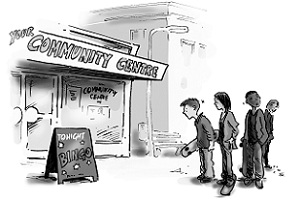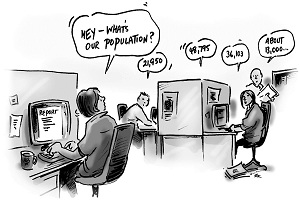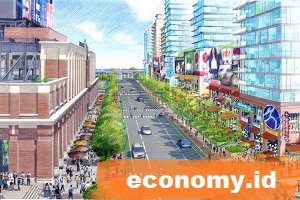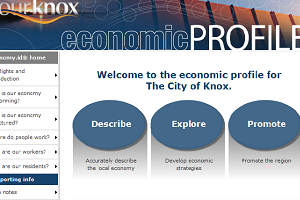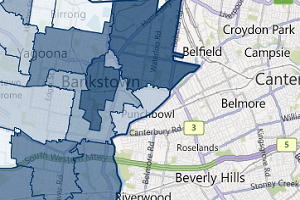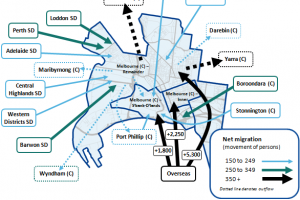How to
Advanced users – Shift Share Analysis for calculating regional competitive advantage
There is a lot of great information in the economy.id sites that enable users to quickly tell a sophisticated stories about a local economy simply by interpreting the existing table, charts and analysis contained within each site.
Who are your Communities of Interest?
For a long time, at .id training sessions, I’ve been asked whether we provide cross-tabulated information.
What is a "Location Quotient" and how do I calculate it?
Location Quotient (LQ) is a term that we hear a lot when working in the area of economic development so we thought it would be useful to explain exactly what it is and how it can be calculated using our online...
How to find average household size in profile.id and forecast.id
While the size of houses being built in Australia has, on average, been getting bigger, the average number of people living in them has traditionally been declining, and in more recent years has stabilised at...
Got anything to report?
.id’s demographic and economic tools are easy to use, and web-based so they are available for anyone to explore, online.
Modelling the impact of changes to your economy
What effect would it have on your economy and your workforce if your area was able to attract a major new employer? What would be the ongoing job losses if a company were to close down in your area, not just in...
Do your industries mainly export or sell to locals?
All areas need some capacity for industry to grow and change, but the focus of areas can be quite different. Many places have a particular industry that they are known for, or specialise in, and which may be...
Check the data notes!
I know it’s boring, but some of the most useful information in the .id demographic tools is hidden away in a link at the bottom of each table. In profile.id, as well as having the exact wording of the Census...
How to build custom demographic reports and export data
In the last week, we have added two exciting new features to profile.id, to further help with telling the demographic story of your area. A custom PDF generator enables you to build a PDF report based on topics...
Which way is up? The difference between ‘bottoms-up’ and ‘tops-down’ population forecasting
Our clients often express a bit of uncertainty about the difference between the various approaches to population forecasting.
Roll camera – more online training videos
During October we have continued to build our online training library, with three new videos now available to view.
It's time to update the .id link page on your website
Check the link text to the .id resources on your council website. Does it still say it has the “new” data from the 2001 census? We’ve checked and lots do!
What do demographic characteristics tell us about who sets the local agenda?
Who responds to invitations for public consultation? Demographic analysis shows they are more likely to be male, older, Anglo Celtic, well-educated and to have a higher income. Missing are the submissions from...
How do I get information out of .id’s websites?
One of the questions we get asked most often at .id training sessions is how to get the data, charts and text out of the .id websites and into your working documents and presentations. This blog will step you...
Making sense of population counts
When people ask – “How many people live in Statsville?” they expect a straight forward, unambiguous answer. If only it were that simple! Believe it or not there are several different ways to count people in...
What is your consultation delivering?
Many New Zealand councils are still up to their armpits in the 2012 Long Term Plan (LTP) consultation. It’s a huge undertaking and one of the most important consultation tasks conducted by councils. I talked a...
How to uncover issues in your economy to inform Economic Development policy, using economy.id
To develop successful Economic Development strategies, you need to know about your local economy. You need to know its strengths, and weaknesses. You need to know where it fits in the overall competitive...
economy.id just got even better
economy.id is a fantastic resource for helping a Local Government Area describe, explore and promote the local economy. We’ve just rolled out a set of changes to make it even better. These changes have resulted...
It’s not just about the Census – what other population data is released by the ABS?
At .id we are keen users of Census data and are eagerly anticipating the release of 2011 data in June. However, it’s not as if the ABS sits around twiddling its thumbs in non-Census years – they have an active...
How to map population change in forecast.id
forecast.id is a great tool for understanding how your area’s population is changing, and what are the likely future outcomes of demographic trends and housing development. Many users are unaware that...
Migration within Australia – the hidden story in profile.id
In the “Additional Data” section of profile.id is the Migration section. This section contains some of the most powerful storytelling within the profile, and can explain a lot of the changes that you see in...










